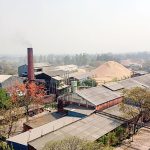Star Paper Mills commenced its operations in 1938, with a capacity of 6,000 TPA. It started with kraft paper production. Over a period of time, it has added a number of bleached grades. At its operations, water consumption of every section is measured by digital meters. Over the years, we have substantially reduced water consumption, and it is less than half of what it used to be a decade ago, the company’s Managing Director, Mr. Madhukar Mishra maintains.

Paper Mart: How do you ensure water efficiency in your operations?
Madhukar Mishra: We have a complete water management system for ensuring efficient use of fresh water as well as waste water / treated wastewater. Water consumption of every section is measured by digital meters. A multi-disciplinary team headed by a General Manager is responsible for monitoring, periodically reviewing and controlling fresh water consumption. In addition to this, the team is also responsible for exploring new technologies for optimizing fresh water consumption and ways to use wastewater / treated wastewater in process.
PM: What is your aggregate annual water consumption? How much has that been reduced over the years?
MM: We have a wide product range and water usage varies with the grades. Over the years, we have substantially reduced water consumption, and it is less than half of what it used to be a decade ago.
PM: What percentage of water consumed is recycled, and where is the discharged water reused?
MM: It is 25-30 %. Reuse of discharge water is done in cooling, sealing, utilities, dilution, gardening and Hydrant system. This is in addition to process water being reused in the process itself.
Watch: Top Paper Companies 2023
PM: What innovative solutions have you introduced in different areas of your mills that have made them more water efficient?
MM: We have successfully implemented various innovative solutions, leading to optimization and efficient use of water in the mill. Some of the examples are as under:
- Use of micro settler and sand filter with auto control of quality of output water for reuse in paper machines
- Use of treated wastewater for cooling in plant
- Recycling fresh water through cooling tower
- Use of water efficient equipment
- Use of MC technology for pulp transfer
PM: What is your water usage reduction target? How do you plan to achieve it?
MM: We plan to reduce water consumption by 20% from the present level. To achieve this target, our first approach will be to optimize fresh water consumption at the consuming point and increase recovery of condensate and flash steam. In addition to this, our focus will be on use of water efficient technology/equipment and increasing reuse of wastewater or treated wastewater in place of fresh water.
Also Read: No Choice, But to Become More Water Efficient, IPMA
PM: What are the challenges you often face in making your mills water efficient?
MM: Reduction in water consumption leads to increased levels of pollutants in the waste water which causes serious complications during treatment and makes the treatment system complex. In addition to this, obviating the impact of increased use of waste or treated waste water on quality of product is also a big challenge.
Reuse of discharge water is done in cooling, sealing, utilities, dilution, gardening and Hydrant system. This is in addition to process water being reused in the process itself.



